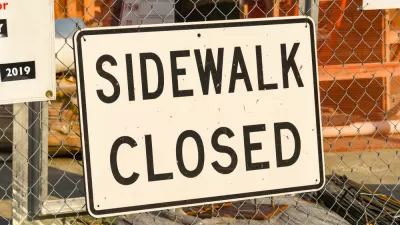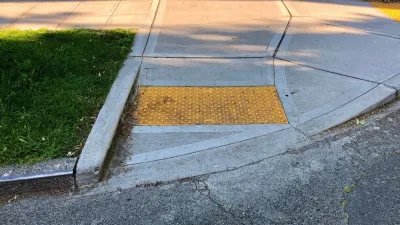A new application, "Playgrounds for Everyone," has a growing database of 2505 inclusive and accessible playgrounds around the country suitable for children with special needs.
According to Anya Kamenetz of NPR Education, about 6.4 million children around the United States have special needs, constricting their access to playgrounds and outside play. To address a growing need for inclusive playgrounds, NPR spent the last year crowdsourcing accessible playgrounds from 48 states and 996 cities to list in their Playgrounds for Everyone application.
Beyond just having fun and expelling bundles of energy, outdoor time, motion, and social interaction help children develop. For example, moving one's head by hanging upside down, spinning, or swinging develops the vestibular system, which informs our own midline and shape. This self-awareness is critical for balance when walking or sitting.
As Kamenetz writes, "children with challenges may get less outdoor playtime than others, for safety, social or other reasons. A widely cited 1991 research article suggested that physically disabled kids could be thought of as experiencing a secondary disability arising from 'play deprivation.'"
So what kinds of design innovations are incorporated into inclusive playgrounds? Some of the features included in these structures are, "[b]road, flat ramps that can accommodate wheelchairs or walkers to get to the top of play structures. Sand tables at wheelchair height. Large swings with back rests and straps for kids who don't sit unassisted. [And] 'cozy spots' for children who need time out from all the distraction and noise."
FULL STORY: Playgrounds For All Children: Here's How To Find One

Alabama: Trump Terminates Settlements for Black Communities Harmed By Raw Sewage
Trump deemed the landmark civil rights agreement “illegal DEI and environmental justice policy.”

Planetizen Federal Action Tracker
A weekly monitor of how Trump’s orders and actions are impacting planners and planning in America.

Why Should We Subsidize Public Transportation?
Many public transit agencies face financial stress due to rising costs, declining fare revenue, and declining subsidies. Transit advocates must provide a strong business case for increasing public transit funding.

Understanding Road Diets
An explainer from Momentum highlights the advantages of reducing vehicle lanes in favor of more bike, transit, and pedestrian infrastructure.

New California Law Regulates Warehouse Pollution
A new law tightens building and emissions regulations for large distribution warehouses to mitigate air pollution and traffic in surrounding communities.

Phoenix Announces Opening Date for Light Rail Extension
The South Central extension will connect South Phoenix to downtown and other major hubs starting on June 7.
Urban Design for Planners 1: Software Tools
This six-course series explores essential urban design concepts using open source software and equips planners with the tools they need to participate fully in the urban design process.
Planning for Universal Design
Learn the tools for implementing Universal Design in planning regulations.
Caltrans
Smith Gee Studio
Institute for Housing and Urban Development Studies (IHS)
City of Grandview
Harvard GSD Executive Education
Toledo-Lucas County Plan Commissions
Salt Lake City
NYU Wagner Graduate School of Public Service





























